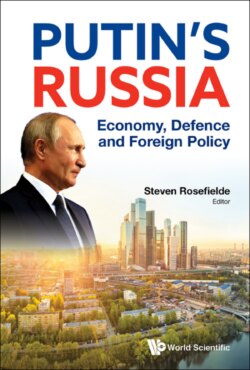Читать книгу Putin's Russia - Группа авторов - Страница 14
На сайте Литреса книга снята с продажи.
Welfare
ОглавлениеRussian per capita income in 2017 was 46.7% of that of America.7 The society is inegalitarian, but less so than the United States. Russia’s Gini coefficient is high at 41.2 and that of America’s is at 45.8 Russia’s poverty rate is 13.2%, a figure the Kremlin predicts will halve over the next 6 years driven by rebounding real income growth.9 America’s poverty rate by comparison was 12.3% in 2017 (Fontenot et al., 2018). This is better than that of Russia’s for the moment, but is unlikely to remain so if poverty in the Federation plummets as forecasted by authorities. The World Bank estimates that the average annual growth of 1.5% would bring down the poverty rate from 13.2% to only 10.7% by 2024. A 4.4% rate of growth would be necessary to achieve the state’s goal of 6.6%, unless the government increases social assistance and transfers. If growth remains sluggish in the 1.5% range, halving the poverty would require transferring 0.27% of the GDP to the poor annually over the next 6 years.
The Kremlin’s poverty reduction programme although broadly welcome has a downside. A portion of the income gain will come from shortened retirements. Russia’s new Pension Law 489161-7 enacted on October 3, 2018 increased the retirement age from 55 to 60 years for women and from 60 to 65 years for men. Although life expectancy at birth is now 72.5 years (77.1 for females; 66.5 for males), the figure is lower for those currently approaching retirement age, causing considerable political consternation. The World Bank supports the Putin administration on the issue from the perspectives of both fiscal prudence and inter-generational justice; nonetheless, the new law is unpopular.
